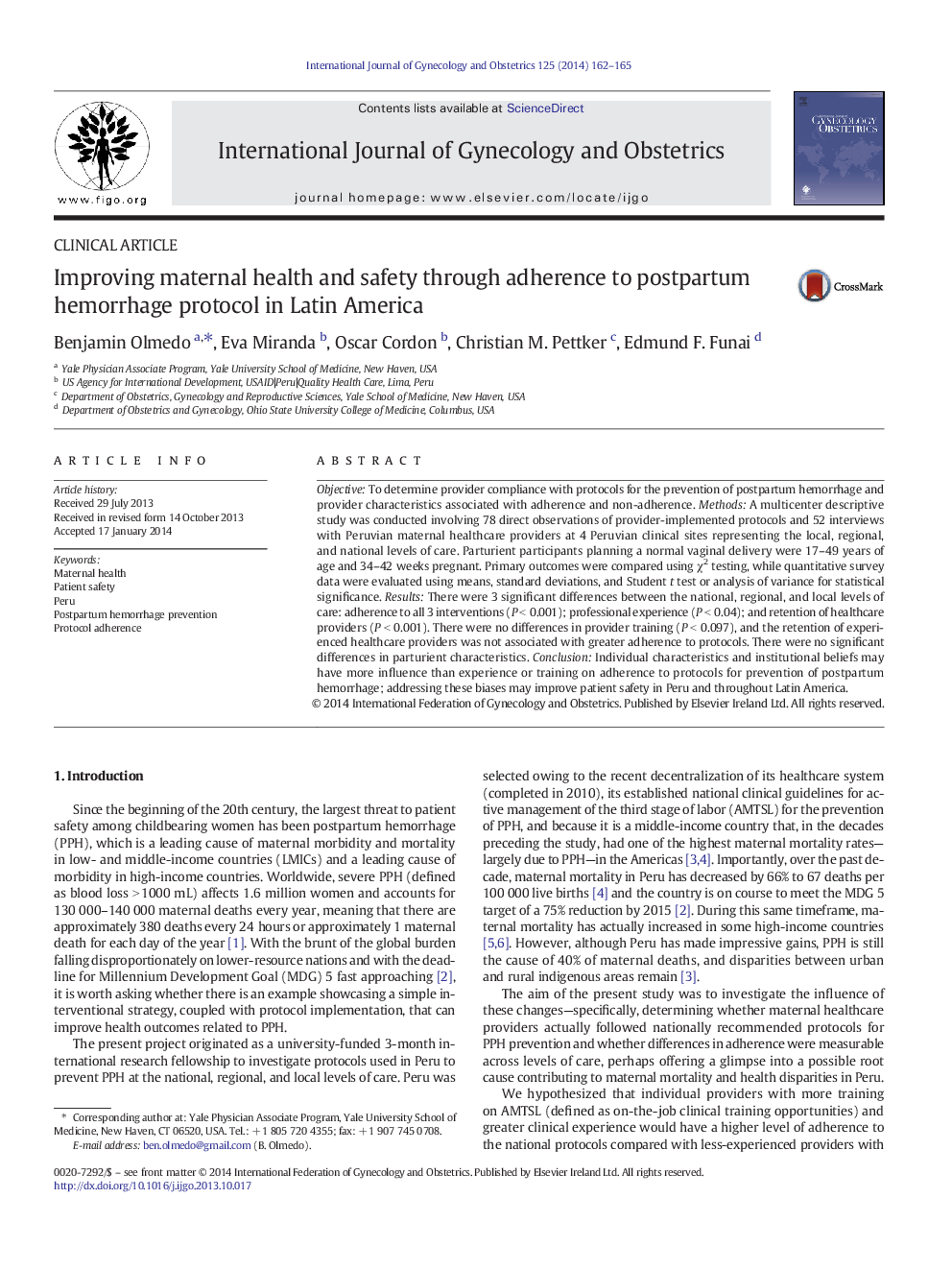| Article ID | Journal | Published Year | Pages | File Type |
|---|---|---|---|---|
| 3950945 | International Journal of Gynecology & Obstetrics | 2014 | 4 Pages |
ObjectiveTo determine provider compliance with protocols for the prevention of postpartum hemorrhage and provider characteristics associated with adherence and non-adherence.MethodsA multicenter descriptive study was conducted involving 78 direct observations of provider-implemented protocols and 52 interviews with Peruvian maternal healthcare providers at 4 Peruvian clinical sites representing the local, regional, and national levels of care. Parturient participants planning a normal vaginal delivery were 17–49 years of age and 34–42 weeks pregnant. Primary outcomes were compared using χ2 testing, while quantitative survey data were evaluated using means, standard deviations, and Student t test or analysis of variance for statistical significance.ResultsThere were 3 significant differences between the national, regional, and local levels of care: adherence to all 3 interventions (P < 0.001); professional experience (P < 0.04); and retention of healthcare providers (P < 0.001). There were no differences in provider training (P < 0.097), and the retention of experienced healthcare providers was not associated with greater adherence to protocols. There were no significant differences in parturient characteristics.ConclusionIndividual characteristics and institutional beliefs may have more influence than experience or training on adherence to protocols for prevention of postpartum hemorrhage; addressing these biases may improve patient safety in Peru and throughout Latin America.
